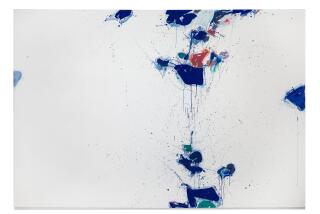PAINTER GETS A ONE-MAN SHOW--AFTER 2,500 YEARS
- Share via
TOLEDO, Ohio — The Amasis Painter, an artist identified only by the name of the Greek potter whose cups and vases he decorated, is regaining fame more than 2,500 years after he lived--in the first one-man show by an ancient artist.
“The Amasis Painter and His World,” the only collection known to feature an individual’s work from the ancient world, has been organized and displayed by the Toledo Museum of Art.
The collection includes a quartet of chariot horses staring out of a vase at the viewer, a lunging hound followed by horseback riders in a hunt, Greek wrestlers mid-contest and satyrs readying the drink and drugs that led humans to knowledge of the god Dionysus.
“We have a whole window on everyday Greek life,” says Kurt Luckner, curator of ancient art at the museum. Luckner envisioned the show three years ago. He wanted an attention-drawer that was different from typical big-name attractions--the Rembrandts, El Grecos, Picassos.
“That’s done all the time. But nobody has ever done such a thing for someone in the ancient world,” Luckner said.
He chose Greek pottery because it is the most common artwork to survive from the ancient world, and works of the Amasis Painter because his were more obtainable than two other celebrated Greek vase painters, Exekias and Lydos.
There are 132 Amasis vases known, of which 64 are in the show, which opened at the Metropolitan Museum of Art in New York and will go on to the Los Angeles County Museum of Art Feb. 20 through April 6.
The Louvre in Paris lent 13 vases; the Vatican lent all five of the Amasis Painter’s works it has. Other vases and shards came from European and American museums and private collectors.
The Amasis Painter’s works span the period 560 to 515 BC and originated in an Athens potter’s shop. Some archeologists and art historians believe Amasis the potter and the Amasis Painter were the same person, but Luckner and others believe the earthenware pots made by Amasis were decorated by others.
Some of the works are inscribed “Amasis made this,” and Luckner believes they would say “Amasis painted this” if they had been made by the same person.
Pottery of the time was known as “black-figure.” Scenes were etched into the black clay with a bronze pin, often in minute detail. Use of color was limited to shades of clay: white, red, oxblood and the orange background of the pot. After firing, the colors became part of the pot.
The Amasis Painter’s work became more and more detailed over the period, a fact Luckner considers a reverse of the norm where an artist’s work becomes less detailed as his eyesight diminishes.
They are recognized as one of the prime sources of knowledge about daily life in Athens. Two matching pieces, for example, respectively detail the entire process of weaving and an evening wedding.
Luckner identifies several characteristics that make the Amasis Painter more significant than his colleagues. He is believed to be the first artist to show a chariot from the front, rather than the side, and used similar artistic innovations throughout his life.
More to Read
The biggest entertainment stories
Get our big stories about Hollywood, film, television, music, arts, culture and more right in your inbox as soon as they publish.
You may occasionally receive promotional content from the Los Angeles Times.










